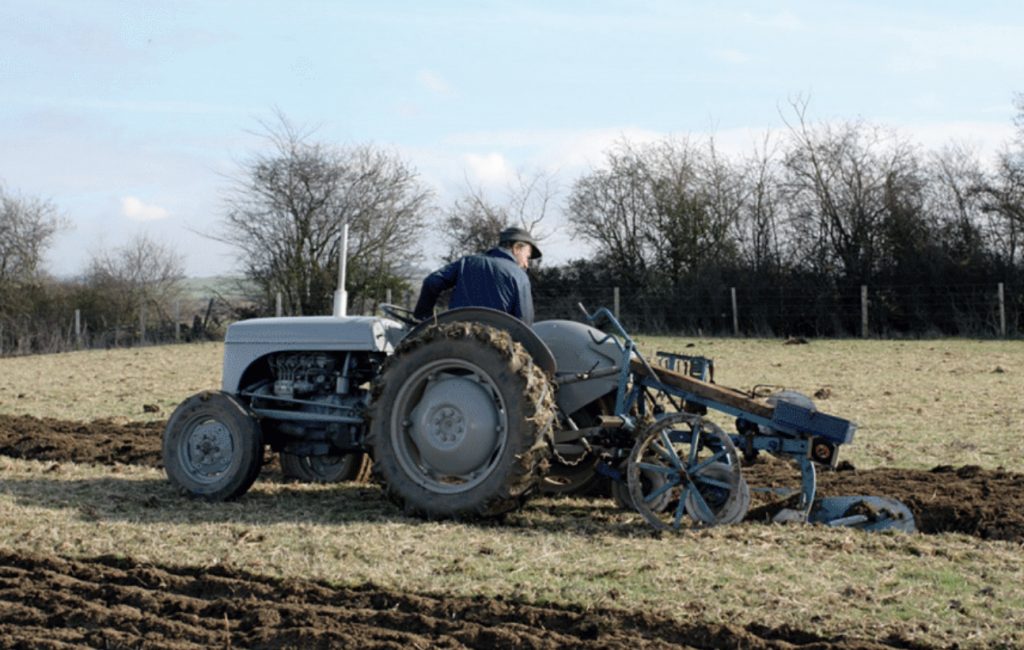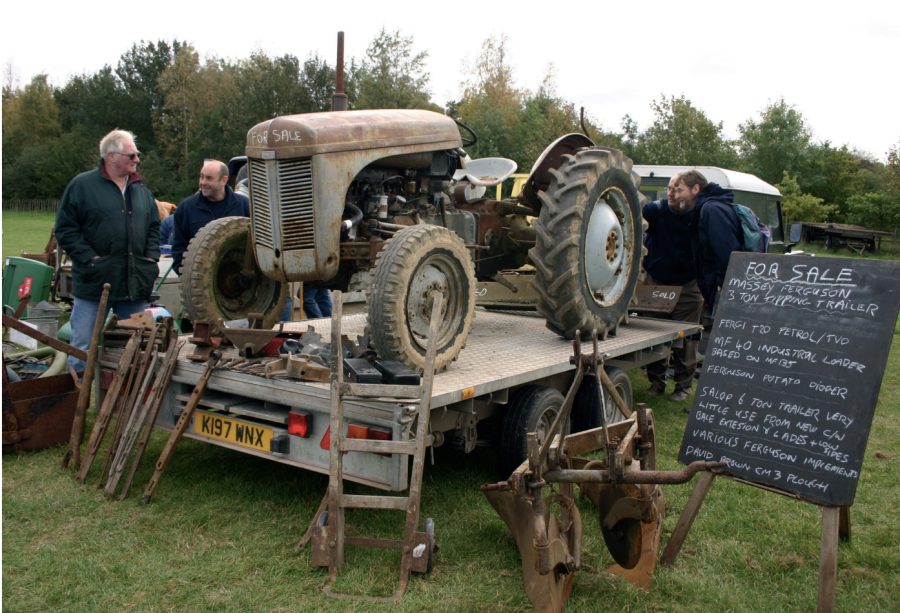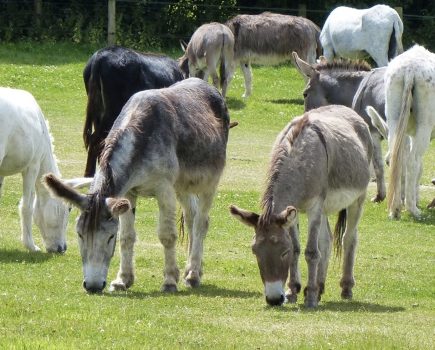Jane Brooks looks at the venerable Ferguson tractor, still a popular tool on many smallholdings, but beware: it takes a little getting used to!
If there’s one model of tractor that’s written most about, makes people smile when they see it and is surprisingly common, it’s Harry Ferguson’s TE20.
Fondly known across the world as the ‘Little Grey Fergie’ there were well over 500,000 made at Banner Lane in Coventry between 1946 and 1956. Their old technology makes them relatively easy to fix, thousands of them are still working and reasonably priced parts are readily available.
The first TE20s came off the production line in October 1946, a light manoeuvrable tractor with a combination of three-point linkage and hydraulics, the revolutionary ‘Ferguson System’ which enabled the tractor and implement to work as one with implements working as part of the tractor not as dead weights towed behind. A hydraulic pump operated by a lever at the side of the driver enabled an implement such as a plough to raise or lower the tool to alter the depth of the plough in the soil.
Ferguson TE20s are fitted with a 9-inch single-plate clutch, there’s no live drive to the PTO or hydraulics, this means that everything stops when the clutch pedal is depressed. If you are more used to driving a more modern tractor it’s a different way of driving and operating implements and takes practice, just as it would have when Harry Ferguson opened his training school back in the late 1940’s.
THE FERGUSON SYSTEM
At the Stoneleigh Abbey, Warwickshire-based Ferguson training school salesmen learnt how to show farmers the new systems versatility, engineers how to maintain the tractors and farmers learnt a new way of working. A network of tractor dealerships was established and public demonstrations of the new compact tractor cultivating an area of just 20 feet by 27 feet, less than a horse or other tractor could work in proved the machines versatility. In fact, when farmers bought a TE20 the dealer went with it to ensure the driver knew what they were doing. Ferguson wanted farmers all over the world to benefit from his system and by the mid-1950s the TE20 was being used in over 160 countries, although with a range of over 60 dedicated implements its use went far beyond farming to the playing fields of England, building sites, road construction and even dam building in South Africa. Due to their age they predate leaded petrol so seem to run happily on unleaded modern fuel and weighing just about 1.5 tonnes they are easy to transport. Many are still seen working on smallholdings, others are kept by collectors and still more are used in horticulture.

Their old-fashioned ways may take a little getting used to but once mastered the Ferguson TE20 is a
great tractor to drive
CHOICE OF ENGINE
Several model options were offered, initially powered by a US built Continental petrol engine, for which parts are more difficult to find its replacement the TE-A Standard Vanguard straight petrol engine is probably the most popular and has good availability of spares.The TE-D20 is a petrol/paraffin model, it’s identifiable by the heat shield fitted over the exhaust manifold and two fuel filler caps on the fuel tank,TVO to the front and petrol to the rear. TVO a mix of rebated heating oil (Kerosene) and petrol is not commercially available so you will need to mix it yourself and are required to have a licence to do so, licences and TVO recipes are available through most tractor clubs including the Friends of Ferguson Heritage. In 1951 the Freeman Sanders designed 26hp four-cylinder 20c Standard indirect injection engine FergusonTEF 20 Diesel Tractor was launched, at the same time12-volt electrics replaced6-volt electrics throughout the range, with dual batteries located above each rear axle. AKi-Gass starting system and decompression lever were also added for cold weather starts. A further diesel engine was used in the Ferguson tractors, firstly as part of a conversion kit and later on some factory fitted models, this was thePeterborough built PerkinsP3 engine. It differs from theStandard engine diesel model as the bonnet is raised by a spacer on the dash to enable to engine to fit. However, they are becoming very popular and sought after.Diesel versions have the most torque, generally pull better at lower revs., and are popular for ploughing, particularly at matches.
NARROW AND OTHER VERSIONS
Factory-made narrow versions such as the TE-L and TE-C, or by the Reekie Company were made for use in for hop gardens, horticulture, vineyards and other small spaces, but as with all things non-standard are increasingly difficult to find. A standard TED-20 can’t tackle rotavating due to the lack of low gear ratios, this prompted Howard rotavators to offer a reduction gearbox designed to fit inside the standard TED-20 transmission. On these conversions the gear lever is on the right-hand side of the transmission housing.A large and varied number of option extras were available with the tractors ranging from an automatic hitch, belt pulley, vertical exhaust, tractor jack, transport box, a lighting kit and a huge array of implements.
USING A FERGIE
To drive modern implements from the pto you will need an adapter to take it up to 1 3/8” drive from its original 1 1/8”. drive, or you can get a new pto output shaft fitted. A down side is that they are not live drive for the PTO, i.e., the foot on the clutch stops the PTO when you change gear. It’s an early tractor, so check its horsepower is up to the implements you want to use, the 26hp Standard diesel or the Perkins P3 diesel engines have the most torque. Today more than 75 years since the first Fergie was produced, collecting classic tractors is a thriving hobby, but with so many people owning Ferguson tractors there is a wealth of knowledge out there, so if you feel like taking on a tractor icon then perhaps a Ferguson TE20 is for you. There will certainly be a lot of help available, and while their old-fashioned ways may take a little getting used to, once mastered, they are a great tractor to drive and have the added advantage of raising a smile from the most reticent of strangers.
Our columnist Jane Brooks is also the Editor of Ferguson Heritage Magazine, a quarterly publication for The Friends of Ferguson Heritage Club.
To receive regular copies of The Country Smallholder magazine featuring more articles like this, subscribe here.
For FREE updates from the world of smallholding, sign up for The Country Smallholder newsletter here.








